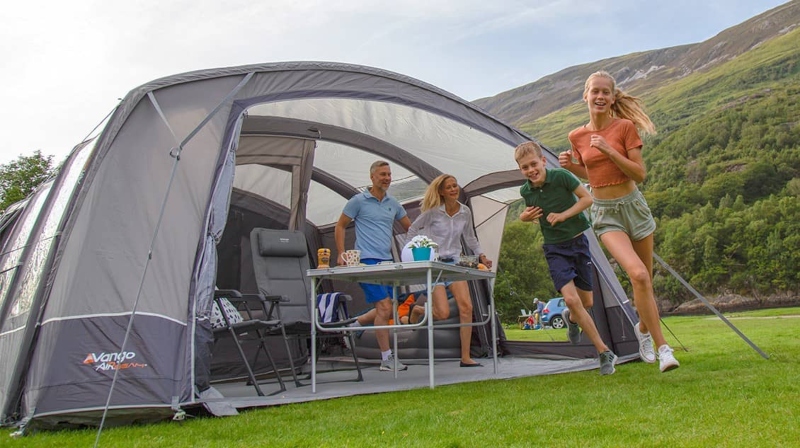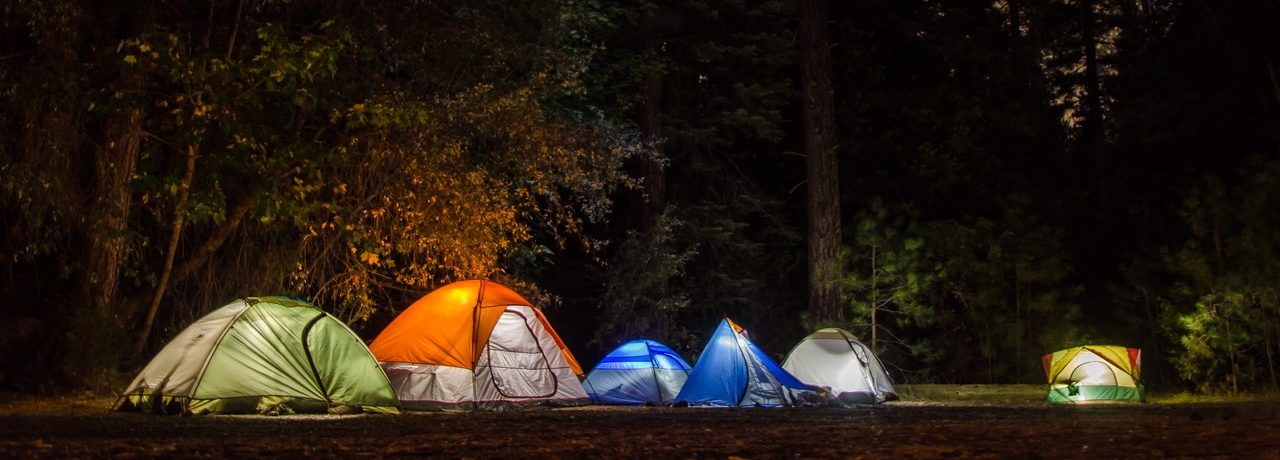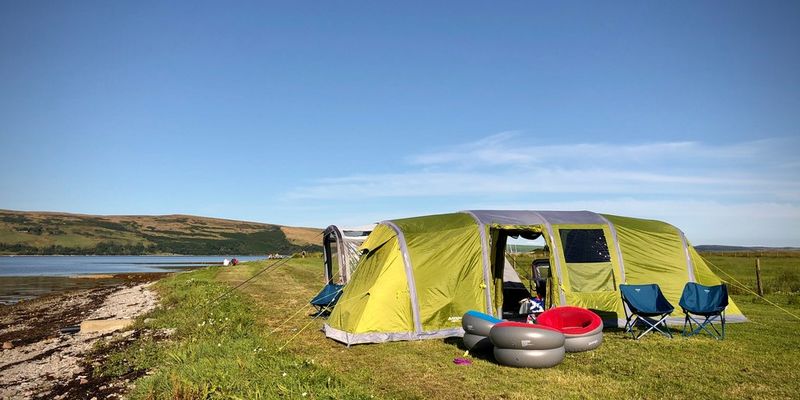The tent is possibly the most important item when it comes to camping. While other options exist such as the bivvy bag and hammock, tents are more suited to the conditions in Ireland. Not every tent is suited to every type of adventure and certain things need to be considered to find a tent that’s right for your adventure:
What size should it be? Which features should it have? Is the weight or colour of a tent important? Is this tent something that you can afford?
In this post, I’d like to take you through some things to consider before investing in a tent. This will help you decide what type of tent is right for your upcoming adventure.
The Season, Size and Weight of a Tent
It firstly depends on what type of adventure you have in mind. For instance, if you plan to go car camping, the weight of a tent won’t matter. As for hiking the Wicklow Way, you will want to strike a balance that allows for a reasonably lightweight tent. Then there’s the season, conditions and number of people you need to squeeze inside!
The Season
Ireland has very unpredictable weather patterns. I recommend choosing a 3-season tent. This is considered an “all-rounder”. Aside from extreme weather, this will suffice in most types of conditions in Ireland. Most tents should be up to this task. For more extreme weather, you’ll need a formidable 3-season tent to withstand strong winds and heavy rain or snow. All considered, a decent 3-season tent should be enough to protect you from the wind and wet-weather conditions.
The Size
How many people will sleep in the tent? Each tent will display a specific size that states one-man tent, two-man tent etc. However, this size will also change with each brand. That is to say, there’s no “industry standard” and some are more spacious than others.
For Car Camping – Size won’t be an issue when you stay on a designated campsite with a car. There’s plenty of space and you don’t need to carry the tent. This means you can pick a tent with whatever special features catch your eye. If you go wild camping and take the car, you won’t want a tent so big that it attracts attention.
For Backpacking – I recommend that you pay close attention as the size will determine the weight that you end up carrying. As a rule, I always go one size bigger. I choose a two-person tent for solo camping and a three-person tent for two people. This is because most “two-person” tents feel rather cramped and small for two people. I also prefer to have lots of space for moving around and keeping my backpack inside. I’m happy to carry that extra bit of weight on my back in order to have this extra space.
Tip – Choose 20 square feet per person for a bit more room and 15 square feet per person for something more compact.
The Weight
You definitely need to think about weight if you intend to carry this tent in your backpack. It will be the heaviest item in your bag and a weight that you can’t lighten until you replace it. At the same time, remember that safety is your number one priority. You should never choose a lightweight tent that may not withstand the conditions and changing environment in Ireland.
A Quick Note About Lightweight and Ultralight Tents
The material on ultralight tents is rather thin and the poles are much lighter than a standard tent. It’s important to know that durability is not sacrificed. These poles etc are often stronger than you might find with a heavy tent. This superior material and design are why lighter tents are more expensive. Most long distance hikers in particular are happy to pay more in order to carry less.
What Else Should You Keep in Mind?
The “Peak Height” of Your Tent
The height of a tent will dictate how spacious it feels inside. The “peak height” is the distance between the ground and the top of the tent. This will determine whether or not you can sit up comfortably in the tent. For car camping, this will also illustrate if you can stand up and walk comfortably around the inside. Also, tents with vertical walls can feel more spacious as they offer more shoulder room.
The Tent Door
I never really cared about the entrance of a tent until I went on my first multi-day hike. In short, having more than one door is very useful. It means you don’t have to climb over another person to get in/out when sharing the tent. I also prefer the side door as it feels easier to pass through – but this is my opinion.
The Vents and Vestibules
Mesh and tents are not to be overlooked. Vents allow a tent to feel less stuffy and reduce the amount of condensation inside. This means vents are even more important on a single-walled tent. As for vestibules, these small porch-like areas are great for storing your bag or keeping your shoes and any wet gear.
The Color
The colour of a tent is important for wild camping in particular. A bright orange tent is more likely to stand out or attract unwanted attention. More specifically, I prefer to go with green or brown tents (natural colours) for wild camping. Preference is also important and light colour tents allow more sunlight to pass through the walls which is very important to me in the mornings!
The Footprint
Footprints are often ignored by hikers but they create the perfect barrier between your tent and the ground. I suggest investing in a lightweight footprint. This will keep the tent dry but also protect the fabric from any loose stones, branches or sharp objects on the ground.
Maybe you want a little more help with choosing the right tent? Here are a few of my suggestions to get you started.
My Tent Recommendations for Camping in Ireland
Hiking Tent for Wild Camping in the Mountains
The Vango Banshee Pro 200 is my favourite tent for wild camping in Ireland. It has a low centre of gravity which enables the tent to withstand heavy winds and rain. There’s just enough space inside for one person and a backpack. The green colour is useful for blending in with the environment. I have many very expensive tents but the Vango Banshee Pro 200 has outperformed most on many occasions. For a two-person tent, you can also upgrade to the Vango Banshee Pro 300. By the way, I carried this tent for the entirety of my 3,000km walk around Ireland a few years ago.
Check out more hiking tents here

For Car Camping with the Family on a Campsite
The Avondale 5-person Airbeam by Outwell is a spacious tent that will suit a family or friends that wish to camp together on a campsite. It has a lot of headroom (height) and a specially designed ventilation system that makes it feel airy inside. The many ropes and pegging points allow for the tent to be secured properly. For something smaller or more affordable, the Huntsville Twin 600 by Easy Camp is a very practical option that features twin facing doors and a large living area inside.
Check out more family tents here

For a Multi-Day Hike on the Wicklow Way, Kerry Way etc
The MSR Hubba Hubba NX 2-Person tent has been on my wishlist since hiking the Pacific Crest Trail. I used a similar tent back then but many of my fellow hikers were using this tent and I’ve wanted it ever since. The tent is super light (3lb 2oz) which is something every long distance hiker will appreciate! The green colour also makes it ideal for blending in with the environment. Aside from the spacious interior, you’ll find this durable 3-season tent the perfect companion for a multi-day hike.
Check out more Hiking tents for multi-day hikes here

For a Budget Alternative for Wild Camping or Multi-day Hikes
The Inis 200 by Rock n River is incredible value and a green dome tent that blends in nicely with natural scenery. With plenty of room inside, the tent is ideal for one or two persons and the tent is rigid and fully waterproofed. There’s also a nicely sized vestibule in front with a mud flap and gear pockets for smaller items inside.
Check here for more great value adventure tents

For a Different Night of Wild Camping in Fair Weather
I tell my friends that a bivvy bag is like a waterproof sleeping bag and this is partially true. A bivvy bag is more useful than it sounds. It is a great way to sleep outside, while feeling more “connected” to your surroundings. The Stratosphere Tent by Snugpack is a lightweight one-person bivvy. It’s a great alternative that promises a more personal or immersive encounter with the outdoors. That being said, I only recommend a bivvy bag to experienced campers and during decent weather.
Check out more hiking tents here

Final Thoughts
You might notice my favourite tents for camping in Ireland are neither the most extravagant nor the most expensive options. There’s a lot to be said for experience and these tents have always performed well for me. That said, everyone will have their own preference. The above guidelines should at least help you find the right tent for whatever adventure you have in mind.











